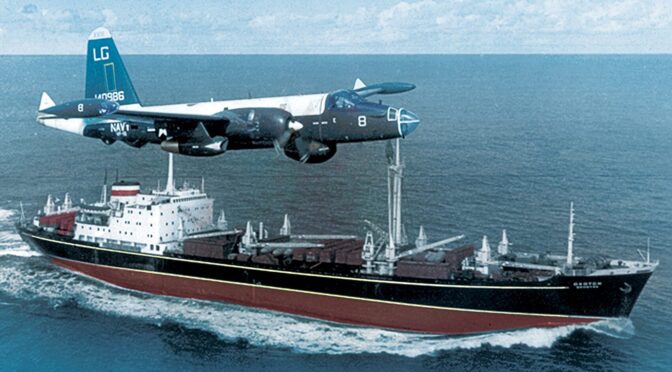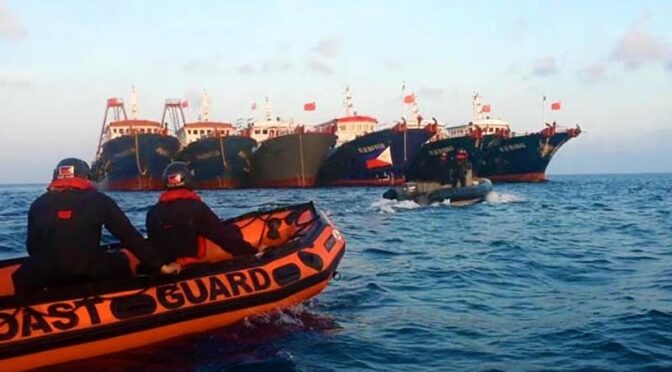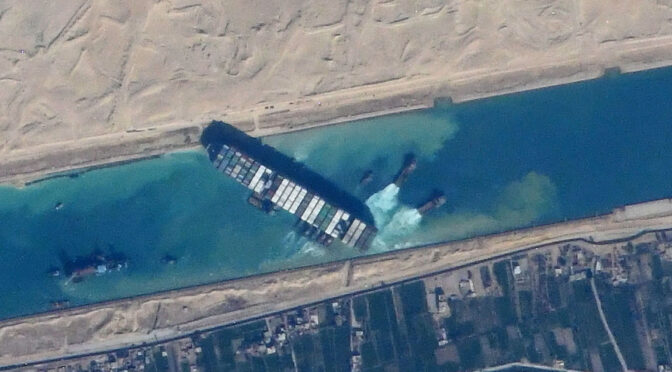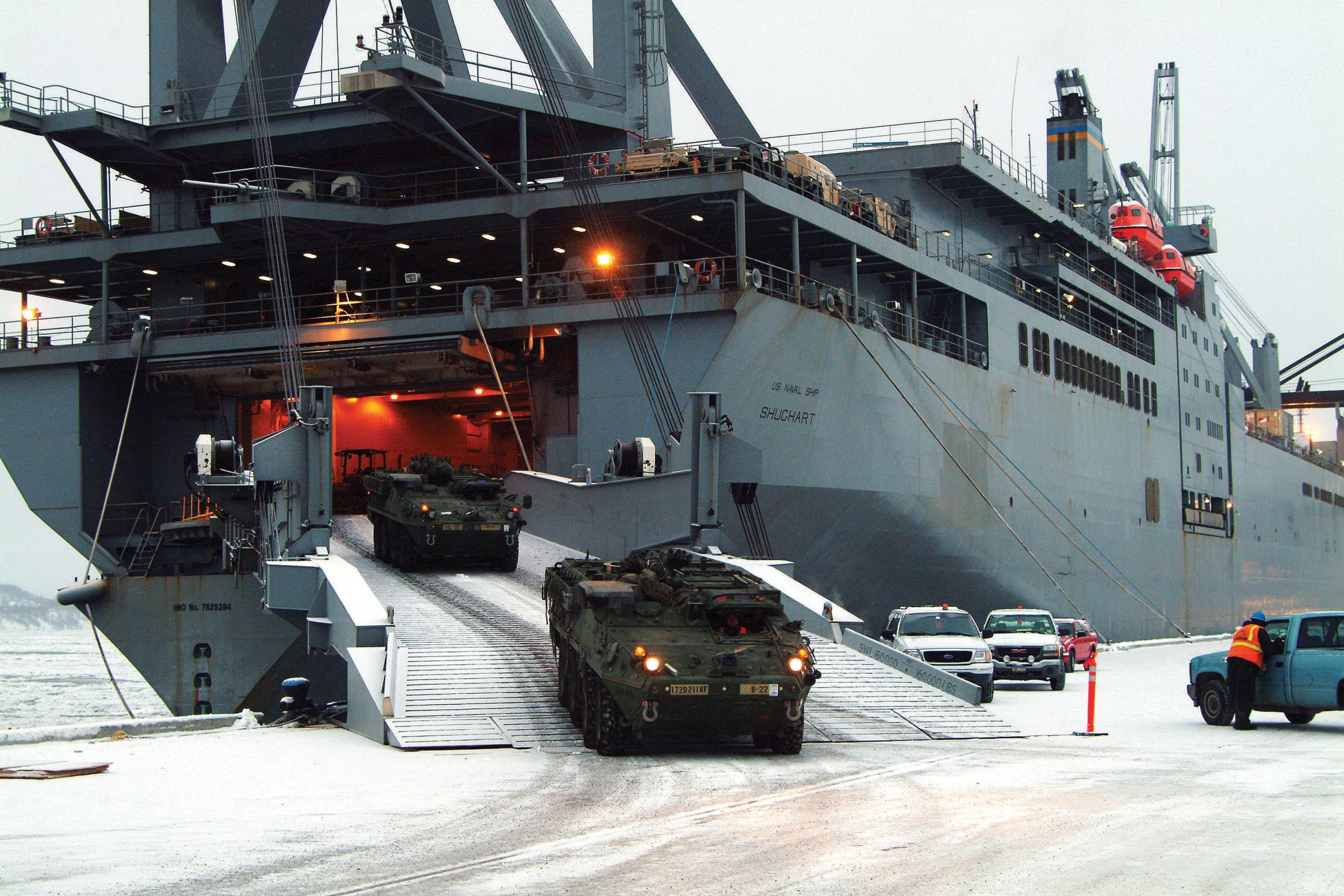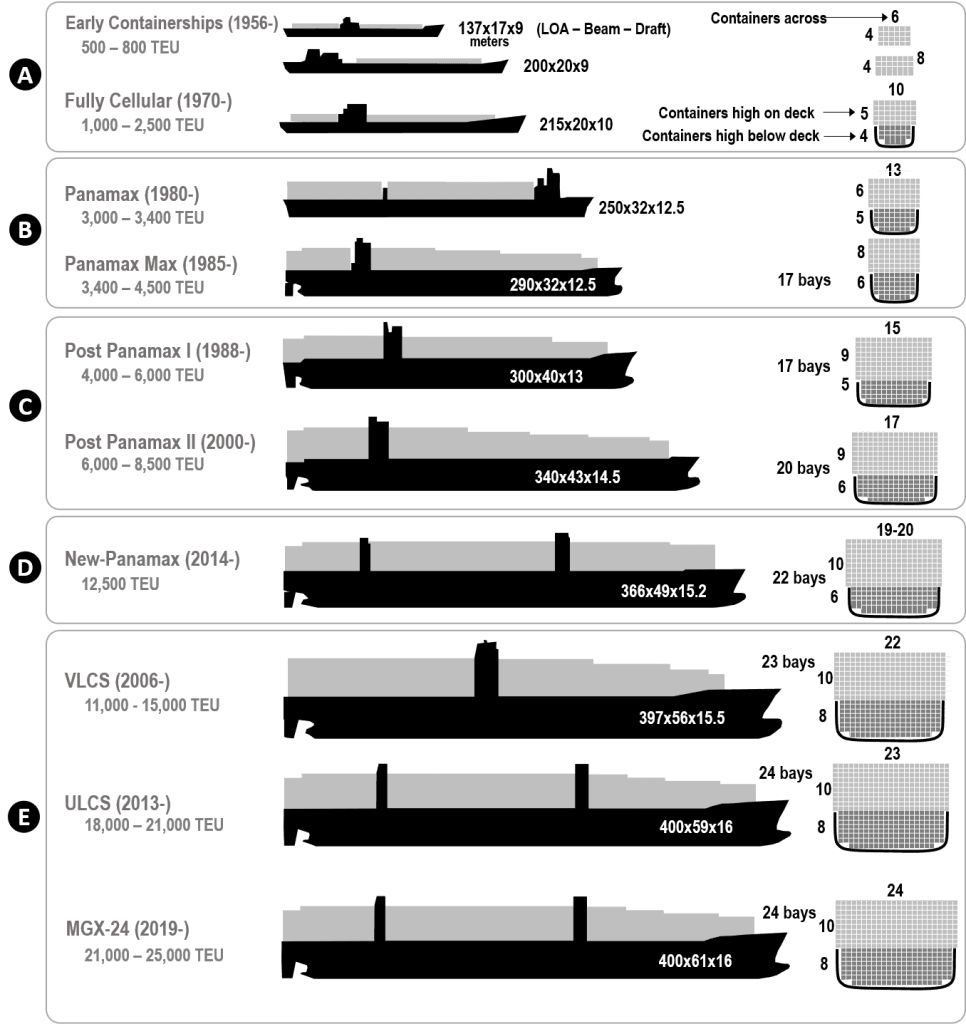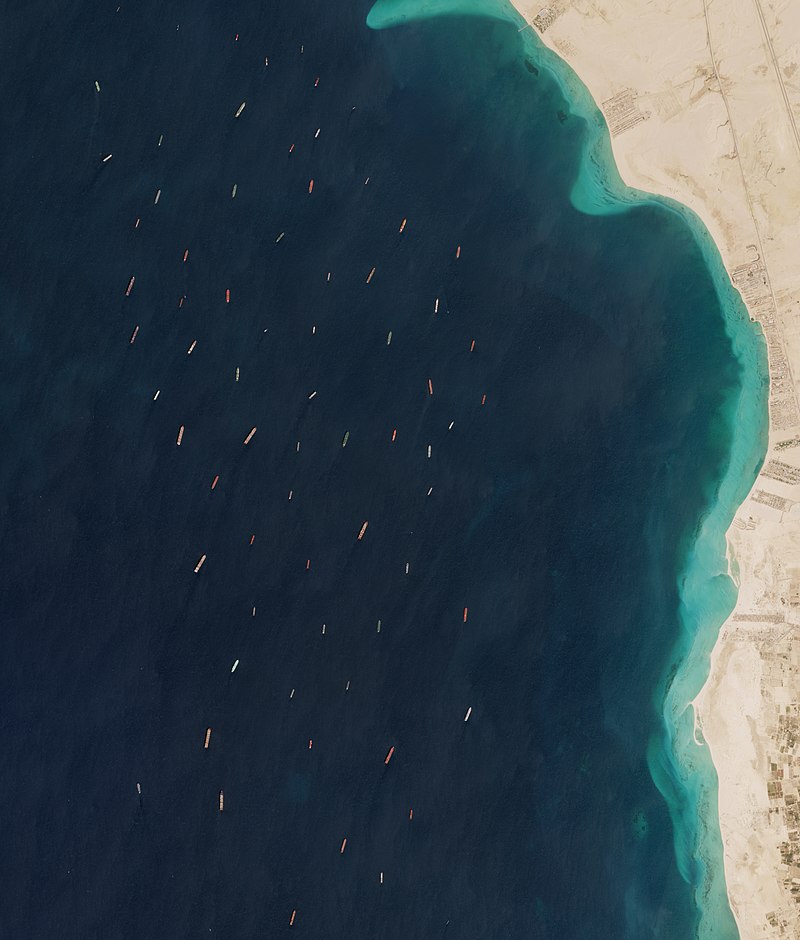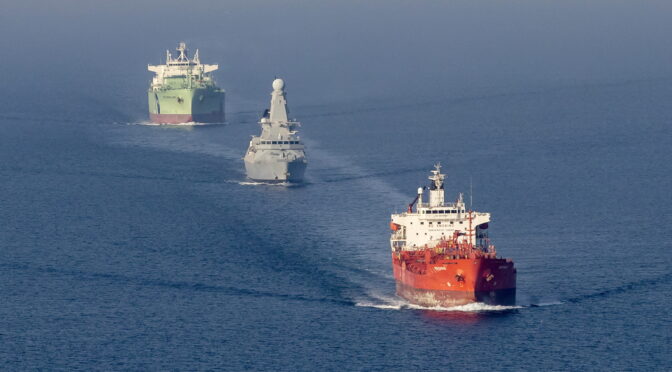By Akshat Patel
The South China Sea is to China as the Caribbean Sea is to the United States. Just as the United States repeatedly thwarted European powers from the Caribbean throughout the nineteenth and twentieth centuries, China intends to thwart an American presence in the South China Sea in this century.1 In 1962, the ambitions of two superpowers reached a crescendo in the form of the Cuban Missile Crisis. Along the same lines, the ambitions of two of today’s great powers are resulting in skirmishes across the South China Sea. In the same way that the clash in the Caribbean was a deciding factor in who the victor of the Cold War would be, American maritime superiority will be decided in large part by who the reigning power in the South China Sea will be.
The parallels between Soviet-U.S. relations vis-à-vis the Caribbean and China-U.S. relations vis-à-vis the South China Sea are as striking as they are instructive. The Red Navy’s mistakes in its transatlantic ventures serve as salutary course corrections for the U.S. Navy’s transpacific undertakings today.
Then, as Now
By the twentieth century, the United States had established itself as the dominant power in the Americas. Politically stable and economically vibrant, the United States overshadowed the smaller republics of the Caribbean. Blessed with two adjacent oceans and two peaceful neighbors, the United States was virtually immune to a land-based invasion. The only way for a foreign power to establish a foothold in the American hemisphere was through the Caribbean. While “the Caribbean was the natural maritime extension of the continental United States, it was also the part of America’s security environment most vulnerable to European attack,” notes Robert Kaplan, senior fellow at the Center for a New American Security.2
In October of 1962, the Soviet Union attempted to exploit this potential American vulnerability through Cuba. The Soviets wanted to establish a naval base and station land-based nuclear missiles on the island nation. President Kennedy ordered an embargo around Cuba to expunge Soviet ambitions from the Caribbean and compelled Khrushchev to blink in the ultimate staring contest. In exchange for withdrawing nuclear missiles from Cuba, the Soviets extracted a public promise to not invade Cuba and a private promise to withdraw American nuclear missiles from Turkey.3 Both sides avoided direct conflict by reaching an agreement that neither desired. The Soviets surrendered their Caribbean aspirations and the United States surrendered its Cuban advances.
China enjoys many of the same benefits of geography as the United States. Surrounded by natural barriers to aggression such as frigid Siberia, the Gobi Desert, the impenetrable Himalayas, and the lush forests of Vietnam and Laos, China is largely shielded from terrestrial attack. Just like the United States, China’s vulnerability is to the southeast. Not only do most Chinese live near the coast, but the South China Sea serves as their primary economic lifeline.4 The straits of Malacca, Makassar, Sunda, and Luzon all pour into the South China Basin and control both China’s energy supplies from the Middle East and its exports to the West.5 Just as the Caribbean is littered with small island nations eclipsed by a colossal United States, the South China Sea is peppered with littoral states over which China casts a large shadow.
The fallout over control of an American sea of 1.5 million square miles foreshadowed the rest of that great-power competition – the Cold War. Similarly, the contest for an Asian sea of comparable proportions will act as a bellwether for the great-power competition taking place today. Five claimants occupy almost 70 different atolls and have built more than 90 different outposts in the South China Sea.6 With 20 outposts in the Paracel Islands, 7 in the Spratly Islands, and 3,200 acres of newly constructed land, China is by far the most aggressive player in the area.7 Malaysian, Philippine, Taiwanese, and Vietnamese maritime claims have been brushed to the wayside while China charges forward to secure its “blue national soil.”8 China is aware of its vulnerability to the southeast and stands to gain immensely by shielding against it. By turning the South China Sea into a Chinese enclave, Beijing would not only safeguard the lives and livelihood of its citizens, but would also create a strategic disadvantage for the United States. The South China Sea is a conduit linking the Western Pacific to the Indian Ocean and Chinese control of that critical juncture would jeopardize American maritime dominance. Lucrative global trade routes would cease to be international common grounds and the redoubts of allied nations would fall under a Chinese penumbra. American merchants would be subject to harassment by the Chinese coast guard and the U.S. Navy would no longer be able to crisscross the Indo-Pacific theater with impunity.
To circumvent China’s efforts to dominate the South China Sea, American naval policy is rightly learning from Soviet efforts. By maintaining naval bases in South Korea, Japan, and Guam while simultaneously encouraging a naval buildup in Singapore, Taiwan, and the Philippines, the United States is building a multilateral coalition to check Chinese forays into the Pacific.9 As the Soviet Union attempted to tamp down American influence in the Americas through Cuba, the United States is curbing Chinese influence in Asia through Association of Southeast Asian Nations (ASEAN) nations.
Empowering the Right Platform
When Che Guevara expressed concern at the Soviet gambit in the Caribbean, Soviet Minister of Defense Rodion Malinovsky replied, “There will be no big reaction from the U.S. side.”10 The Soviet defense minister expected little retaliation from the United States because, as he viewed it, he was exercising soft power by bringing Cuba into the fold. As the term “Cold War” reminds us, neither side was ever interested in a full-fledged, direct, violent conflict; instead, the Cold War was a great-power competition in which both sides tried to undermine the other through maximum power projection while suffering minimal losses. To project this power, the Soviets wanted to permanently station an entire fleet in the Caribbean: two cruisers, four destroyers, eleven diesel electric submarines, and two submarine tenders.11 But, at the last minute, the Soviets changed their plans. Instead, they sent forth four covert Foxtrot-class diesel submarines as the vanguard of the Red Fleet.12
The reigning Soviet naval doctrine prioritized submarines over surface ships. In 1956, Khrushchev stated that “submarines were the most suitable naval weapon and they would receive emphasis in the future development of the Soviet Navy.”13 As a result, new construction of major surface vessels was virtually terminated under his premiership.14 According to a 2017 CIA analysis of the Soviet Navy, “Khrushchev declared surface naval forces…no longer useful and predicted they would soon become obsolete.”15 Motivated by advances in technology, the Soviets wanted to reduce overall military manpower and costs by replacing a large surface fleet with a more effective, smaller submarine fleet.16 In other words, they prioritized a denser more capable force over a more numerous, less capable one.
By attempting a transatlantic overture to the Caribbean, the Soviets made the right geopolitical decision. By sending submarines, they made the wrong tactical decision. Submarines are mobile, undersea intelligence gatherers packed with brutish lethality. They are about “sheer aggression,” not power projection.17 They are best suited to spy and wreak havoc, not as conspicuous icons of power. By deploying covert submarines to the Caribbean, the Soviets were guaranteed to alarm Americans and provoke a strong response. President Kennedy ordered a maximum Anti-Submarine Warfare (ASW) effort to track and surface the submarines.18 The Soviets were not harmlessly posturing by deploying submarines within sailing distance of Florida while simultaneously stationing land based nuclear missiles at America’s doorstep. They were committing an act of belligerence that the Unites States met with force. The Atlantic Fleet mobilized to detect and ferret out the furtive aggressors. As Defense Minister Malinovsky’s comment suggests, the bold step to Cuba was never supposed to culminate into the hair-raising crisis that it did. His intention was to assert Soviet dominance without causing an international scene. This is exactly the United States’ objective in the South China Sea today.
To maintain American primacy in the South China Sea, Chinese maritime ambitions must be curtailed without devolving into the grand standoff that occurred in the Caribbean. Submarines should not be the U.S. Navy’s primary tools in this great-power competition. Because of the raw aggression that submarines communicate, they are ill-suited for missions that display military power and best suited for missions that exercise military power. The surface fleet’s strengths are altogether opposite.
Aircraft carriers, simultaneously symbols of national power and of national prestige, are excellent tools for communicating power, but a ruinously costly platform to lose.19 Losing a symbol of national pride would deal irreparable damage to the national psyche. The U.S. Navy must look to its destroyers and cruisers as the primary combatants of this great-power competition. While not as awe-inspiring as an aircraft carrier, they are still an excellent form of communication. The U.S. Navy has rightly increased destroyer and cruiser freedom of navigation operations (FONOPs) in the South China Sea, and it must continue this upward trajectory.20 By regularly challenging expansive Chinese claims, Washington must continue to signal Beijing that the South China Sea is not a Chinese lake. Frequent FONOPs through contested sea lanes go much farther in projecting maritime strength, communicating intentions, and deterring aggression than stealthy submarine deployments. To do this effectively, and not repeat Soviet mistakes, the United States needs a larger surface fleet.
The battle of ‘capability vs. numbers’ is a perennial struggle that has haunted the minds of American naval policy wonks for decades. Examined holistically, there is a clear winner. “The trend towards fewer, more capable ships is both unarguable and . . . inexorable,” notes Admiral John Ellis, former Commander of United States Strategic Command.21 Over the past twenty-five years, the number of ships in the U.S. Navy has decreased by nearly half while the demands placed on the American fleet remain the same.22 “Today, that means twice the percentage of the fleet is deployed than was at the height of the Cold War,” notes ex-Chief of Naval Operations Admiral Gary Roughead.23 At the same time, the Congressional Budget Office recently determined that the Navy is only able to fulfill 60 percent of deployments requested by combatant commanders.24 In short, at some point, numbers do matter. Simple math dictates that if the U.S. Navy has fewer ships, either they need to be deployed more often or they must be asked to execute fewer missions. The Navy must stem its unrelenting pursuit of a leaner, cutting-edge fleet. Naval budgeteers must be willing to substitute a pricey aircraft carrier for a dozen more destroyers or cruisers. Vulnerable aircraft-carriers and stealthy submarines will not be the heroes that secure American maritime superiority, it will be destroyers and cruisers.
Together, not Alone
The Cuban missile crisis of 58 years ago stands as the most studied event of the nuclear era—so much so that there are essays about why we should stop writing essays about it.25 Yet, until fall 2002, American national security experts were not aware that the four Foxtrot-class diesel submarines deployed to Cuba had been armed with nuclear-tipped torpedoes.26 The CIA’s four intelligence reports on Soviet arms buildup leading up to the Cuban Missile Crisis categorically ruled out the presence of nuclear weapons in the Caribbean.27 Instead of preparing Americans for the possibility of nuclear catastrophe, intelligence reports based on complacent assumptions made the discovery of this fact all the more shocking. In short, the Soviet Union caught the United States flat-footed.
Handicapped by the technology of the time and oblivious to the presence of tactical nuclear weapons, the U.S. Navy decided to release a Notice to Mariners (NTM) detailing how depth charges would be used to peacefully signal the submarines to surface. Moscow never sent an acknowledgement of receiving the NTM.29 Upon detecting the nuclear torpedo laden B-59, American naval forces started dropping depth charges in accordance with the NTM. Unaware of American intentions, suffering from inhospitable conditions and agitated by the subsurface explosions, Captain Savitsky gave the order to ready the nuclear torpedo: “We’re gonna blast them now! We will die, but we will sink them all—we will not become the shame of the fleet.”30 It is because cooler heads prevailed on the B-59 that day that the Caribbean was not subject to a nuclear explosion. Second Captain Vasily Arkhipov overruled Captain Savitsky and prevented the opening shot of a nuclear war.
Now as then, complacency continues to surprise and compel the United States into ad hoc, reactive measures. In 2012, both China and the Philippines swarmed a collection of rocks and reefs known as Scarborough Shoal. Up until then, both countries claimed the Shoal as theirs, but it was under de facto Philippine control. 550 nautical miles from the closest Chinese land mass and 124 nautical miles from the main Philippine island of Luzon, the Scarborough Shoal episode exemplifies China’s ambitions in the South China Sea.31 To mediate their dispute, the United States hastily brokered a bilateral agreement for both sides to retreat and, in effect, return control to the Philippines. Only one side held to its word. China used the agreement to deceive the Philippines into retreating while maintaining its presence. Without American reprisal or condemnation, China has since then controlled Scarborough Shoal.
The United States must not let the People’s Liberation Army (Navy) bully China’s neighbors. Unlike Khrushchev’s about-face with Castro, the United States must stand steadfast beside its allies. Despite increased FONOPs in the South China Sea, a recent public opinion poll of ASEAN citizens indicated that almost two-thirds of respondents believed U.S. engagement with ASEAN nations had declined. Another one-third said they had little to no confidence in the U.S. as a strategic partner and provider of regional security.32 The United States must reaffirm its commitment to the South China region through military sales, combined exercises, and economic empowerment. It is much harder to reverse a change in the status quo than to maintain it through deterrence. By turning the cause of American maritime dominance into a multilateral quest, China’s unilateral offensives will be rendered moot.
One More Time
The Soviet Union was not defeated through armed conflict; it was defeated through persistent coercion. As the United States negotiates its presence in the South China Sea, and by extension its maritime dominance, it must rely on the same strategy that overwhelmed the Soviet Union while not resurrecting Soviet mistakes. The Soviet decision to forsake their surface fleet and their allies precipitated their withdrawal from the Caribbean, which in turn forecasted their global retreat and eventual downfall. The United States must simultaneously lean on its surface fleet and its ASEAN allies to maintain its position as the bailiff of the world’s saltwater commons.
Sun Tzu pithily remarked that the supreme art of war is to subdue the enemy without fighting. We have done it once before, now we must do it again.
LT Akshat Patel is a Submarine Warfare Officer in the U.S. Navy. The views expressed here are those of the author alone and do not represent those of the Department of Defense.
Endnotes
1. John J. Mearsheimer, The Tragedy of Great Power Politics, (W. W. Norton, New York, 2001), 401.
2. Robert D. Kaplan, Asia’s Cauldron: the South China Sea and the End of a Stable Pacific (New York: Random House, 2015), 278.
3. Noam Chomsky, “Cuban Missile Crisis: How the US Played Russian Roulette with Nuclear War,” The Guardian, Guardian News and Media, October 15, 2012, https://www.theguardian.com/commentisfree/2012/oct/15/cuban-missile-crisis-russian-roulette.
4. George Friedman, The Next 100 Years: A Forecast for the 21st Century (New York: Random House, 2009), 153.
5. Ibid.
6. “Occupation and Island Building,” Asia Maritime Transparency Initiative (Center for Strategic and International Studies), accessed April 25, 2020, https://amti.csis.org/island-tracker/
7. “China Island Tracker,” Asia Maritime Transparency Initiative (Center for Strategic and International Studies), accessed April 25, 2020, https://amti.csis.org/island-tracker/china/
8. Kaplan, Asia’s Cauldron, 60.
9. Ibid., 75.
10. Svetlana V Savranskaya, “New Sources on the Role of Soviet Submarines in the Cuban Missile Crisis,” Journal of Strategic Studies 28:2 (April 2005): 236, doi: 10.1080/01402390500088312.
11. Raymond Garthoff, “New Evidence on the Cuban Missile Crisis: Khrushchev, Nuclear Weapons, and the Cuban Missile Crisis,” Cold War International History Bulletin 11 (Winter 1998): 253.
12. Ryurik A Ketov, Captain 1st Rank, Russian Navy (retired), “The Cuban Missile Crisis as Seen Through a Periscope,” Journal of Strategic Studies 28:2 (April 2005): 218, doi: 10.1080/01402390500088304.
13. Soviet Navy: Intelligence and Analysis During the Cold War (Central Intelligence Agency, 2017), 12.
14. Ibid., 7.
15. Ibid., 12.
16. Ibid., 8.
17. Kaplan, Asia’s Cauldron, 71.
18. Svetlana V Savranskaya, “New Sources on the Role of Soviet Submarines in the Cuban Missile Crisis,” 249.
19. “Aircraft-carriers are big, expensive, vulnerable – and popular,” The Economist, November 2019; Jeff Vandenengel, “Too Big to Sink,” Proceedings, May 2017.
20. Zack Cooper et al. “America’s Freedom of Navigation Operations Are Lost at Sea,” Foreign Policy, January 2019.
21. James O. Ellis, Admiral, U.S. Navy (retired), “Rightsize the Navy,” Hoover Digest (Summer 2018): 49.
22. Gary Roughead, Admiral, U.S. Navy (retired), “A Stretched Navy and A Fiscal Disconnect” Strategika 47 (January 2018).
23. Ibid.
24. Ellis, “Rightsize the Navy,” 51.
25. Eliot A. Cohen, “Why We Should Stop Studying the Cuban Missile Crisis,” National Interest, Winter 1985/86.
26. Svetlana V Savranskaya, “New Sources on the Role of Soviet Submarines in the Cuban Missile Crisis.”
27. Amy B. Zegart, “October Surprises,” Hoover Digest (Fall 2013): 50.
28. Svetlana V Savranskaya, “New Sources on the Role of Soviet Submarines in the Cuban Missile Crisis,” 249.
29. Ibid., 250.
30. Ibid., 246.
31. Gordon G. Chang, “A China Policy That Works – For America” Strategika 41 (May 2017).
32. Jack Kim et al. “Southeast Asia wary of China’s Belt and Road project, skeptical of U.S.: survey,” last modified January 6, 2019, https://www.reuters.com/article/us-asean-singapore-idUSKCN1P00GP.
Featured Image: A P2V Neptune U.S. patrol plane flies over a Soviet freighter during the Cuban missile crisis in 1962. (Photo via Wikimedia Commons)

